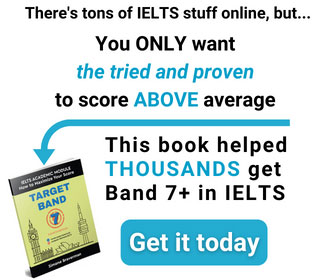Tips for the Writing Task 1 of the IELTS Academic test
As I promised to many of you, this is what you need to know about the Academic IELTS Test Writing Task 1.
The task here is to describe a graph in a report. The report is intended for a university lecturer, so the language you use should be appropriate.
There are several different graphs you could see in a Writing Task 1:
No matter what graph, diagram or table you are describing, you shouldn’t break these rules:
When your Academic Writing Task 1 is graded by IELTS examiners, they look for this structure:
Introduction
Overview
Body
The Introduction should state what the graph/chart is describing, this is basically the task prompt that has been rephrased to some extent.
The Overview should talk about the most noticeable features/trends you can see on the graph. Remember that you are describing a graph to someone who can’t see it, so you need to visualise it for them. Don’t mention any particular figures in the overview paragraph, only the trends.
The Body should describe the most important trends in more detail, while all information is summarised to avoid unnecessary detail. For example, if there is a graph that has 2 peaks, you should mention them; tell when those peaks appeared and what the peak values are. Notice how many distinctive features the diagram has and divide information into paragraphs, one paragraph per feature. You should link the paragraphs by sentences that logically connect them to one another.
Important! You need to write about all the periods of time and all the subjects of graph. If it shows several years (1992, 1993, 1994) – write about all of them, if it is about men and women – write about both. Remember, summarizing doesn’t mean throwing away information. The secret here is to select what’s important, organize it, compare and contrast.
The Conclusion should sum up the global trends shown on the graph and compare them if possible.
And if you need some sample answers, here they are, enjoy.


